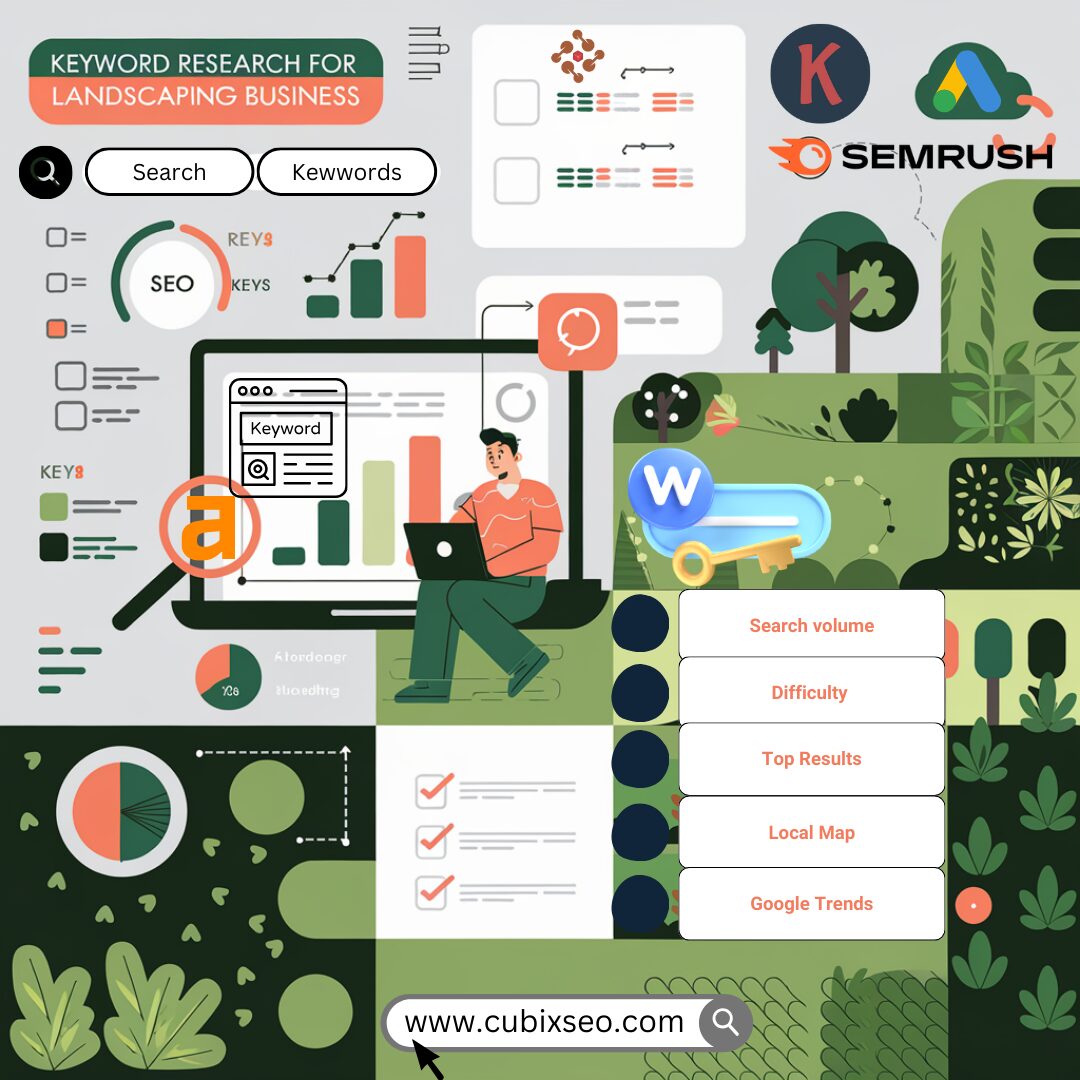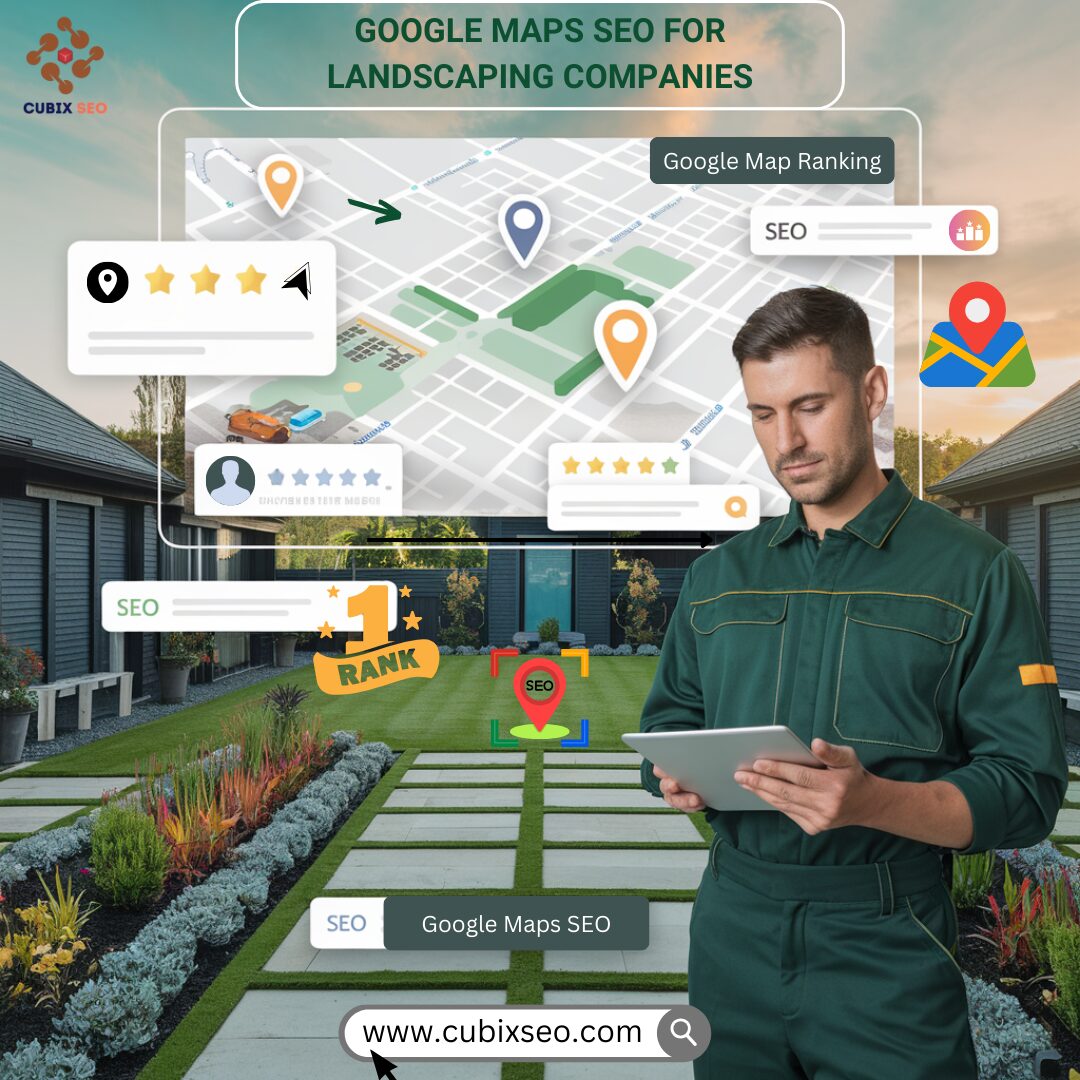Google Maps SEO for Landscaping Companies: Boost Your Local Visibility
Introduction
For landscaping businesses, being found online is no longer optional—it’s essential. As more homeowners and property managers reach for their phones to find local services, your Google Maps presence has become your digital storefront.
Think about it: when someone searches for “landscapers near me” or “lawn care in [your city],” they’re not just browsing—they’re ready to hire. Having your landscaping business appear prominently in these local searches directly connects you with customers actively seeking your expertise.
This guide will walk you through practical strategies to enhance your landscaping company’s visibility on Google Maps, helping you capture more local leads while outpacing competitors in your service area.
I. Google Maps SEO (What is Google Maps SEO?)
Google Maps SEO represents the strategic process of optimizing your business’s digital footprint to achieve higher rankings within Google Maps search results. This specialized form of local SEO focuses specifically on improving visibility within Google’s map-based search interface, which is often the first thing potential customers see when searching for local landscaping services.
The significance of this optimization cannot be overstated—according to recent research, 46% of all Google searches have local intent, with 88% of consumers who conduct a local search on their smartphone visiting a related store within one week.

Benefits for Landscaping Businesses
Landscaping companies that effectively implement Google Maps SEO strategies experience several distinct advantages:
- Enhanced Local Visibility: Your business appears prominently when potential clients search for landscaping services in your area, increasing the likelihood of discovery.
- Improved Credibility: A well-maintained Google Maps presence with positive reviews and comprehensive information instills confidence in potential clients researching service providers.
- Targeted Customer Acquisition: Connect specifically with users searching for specialized services such as hardscaping, landscape design, lawn maintenance, or irrigation systems.
- Competitive Differentiation: Stand out among competing landscaping businesses through strategic optimization of your digital presence.
II. Landscaping Google Maps Optimization (Google Maps Optimization for Landscaping Businesses)
Claim and Verify Your Listing
The foundation of effective Google Maps SEO begins with properly claiming and verifying your Google Business Profile (formerly Google My Business):
- Create or Claim Your Profile: Visit Google Business Profile Manager and search for your business. If it exists, claim it; if not, create a new listing.
- Verification Process: Complete Google’s verification process, typically done through a postcard sent to your business address with a verification code.
- Complete All Fields: Ensure every section of your profile is thoroughly completed, as profiles with 100% completion score higher in search results.
Accurate Business Information
Maintaining precise business information is critical for both search algorithms and potential customers:
- NAP Consistency: Your Name, Address, and Phone number must be identical across all online platforms, including your website, social media, and other directory listings.
- Business Categories: Select the most relevant primary category (e.g., “Landscape Contractor” or “Landscape Designer”) and appropriate secondary categories that reflect your service offerings.
- Business Attributes: Highlight specific features of your landscaping business, such as “Eco-friendly practices,” “Free estimates,” or “Emergency services available.”
- Service Area: Define your precise service radius to appear in relevant local searches.
Visual Content Optimization
The landscaping industry is inherently visual, making image optimization essential:
- Portfolio Showcase: Upload high-resolution images of your best landscaping projects, demonstrating range and quality of work.
- Before/After Transformations: Include compelling visual evidence of landscape transformations to showcase expertise.
- Team and Equipment: Feature images of your professional team and specialized equipment to build trust and demonstrate capability.
- Geo-tag Images: Ensure all uploaded photos contain location data to reinforce local relevance.
Reviews and Ratings Management
Customer reviews significantly impact both rankings and conversion rates:
- Systematic Review Generation: Implement a consistent process for requesting reviews from satisfied clients upon project completion.
- Response Strategy: Respond promptly to all reviews—both positive and negative—demonstrating engagement and accountability.
- Review Diversity: Encourage clients to mention specific services (e.g., “landscape design,” “irrigation installation”) to enhance keyword relevance.
- Review Velocity: Maintain a steady stream of new reviews rather than acquiring them in irregular bursts.
Content and Description Optimization
Strategic content development within your profile strengthens relevance for targeted search queries:
- Business Description: Craft a compelling, keyword-rich description that naturally incorporates terms like “professional landscaping services,” “landscape design experts,” and location-specific phrases.
- Services Section: Detail your complete service offerings with specific keywords relevant to each service category.
- Posts Feature: Regularly publish updates showcasing recent projects, seasonal offerings, or professional insights to demonstrate activity and expertise.
III. Local Keyword Targeting

Identifying the Right Keywords
Effective keyword targeting connects your landscaping business with the specific search terms potential clients use:
- Core Service Keywords: Include primary service terms like “landscaping,” “landscape design,” “lawn care,” “hardscaping,” “irrigation,” etc.
- Geographic Modifiers: Incorporate city names, neighborhood references, and regional terms relevant to your service area.
- Specific Search Intent: Target long-tail keywords that indicate high conversion potential, such as “drought-resistant landscaping in [City]” or “commercial landscape maintenance near me.”
- Seasonal Service Keywords: Adapt keyword strategy to include seasonal services like “fall cleanup,” “spring planting,” or “winter landscape preparation.”
Keyword Integration Strategies
Implement a cohesive approach to keyword deployment across your digital assets:
- Website Alignment: Ensure your main website content echoes and reinforces the keywords used in your Google Maps presence.
- Localized Landing Pages: Develop location-specific pages for each primary service area to strengthen geographical relevance.
- Citation Consistency: Maintain consistent keyword usage across all business citations and directory listings.
- Customer Engagement: Encourage customers to use relevant keywords when leaving reviews by asking specific questions about your services.
Competitive Analysis and Differentiation
Understanding your local competition informs more effective optimization:
- Competitor Review: Analyze the Google Maps presence of top-ranking local landscaping businesses.
- Unique Value Proposition: Identify and emphasize service offerings, expertise, or qualifications that differentiate your business.
- Keyword Gap Analysis: Identify valuable keywords your competitors may be missing and incorporate them into your strategy.
Conclusion
Effective Google Maps SEO represents a significant opportunity for landscaping businesses to enhance local visibility, attract qualified leads, and build a strong reputation in their service area. By implementing a comprehensive optimization strategy—from claiming and verifying your listing to sophisticated keyword targeting—your landscaping business can secure prominent placement in local search results.
Remember that Google Maps optimization is an ongoing process requiring consistent attention and refinement. Regular updates to your profile, continued focus on review generation, and adaptation to evolving search trends will ensure your landscaping business maintains and improves its visibility over time.
For landscaping professionals seeking to maximize their local digital presence, these Google Maps SEO strategies offer a clear pathway to connecting with more local clients and growing your business in an increasingly competitive market.
Landscaping companies can get in touch in order to have a free consultation with the GMB experts


